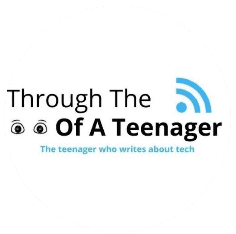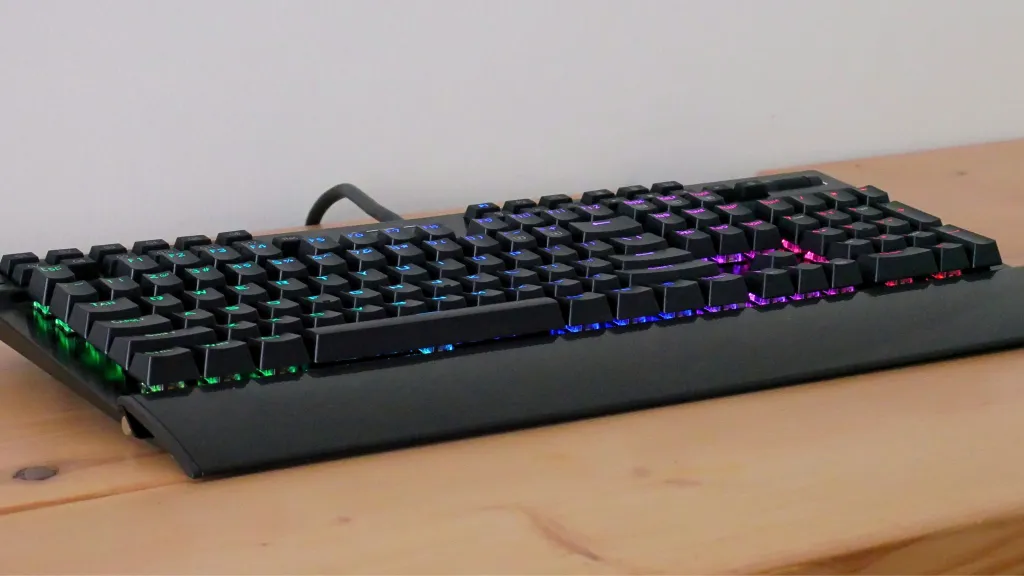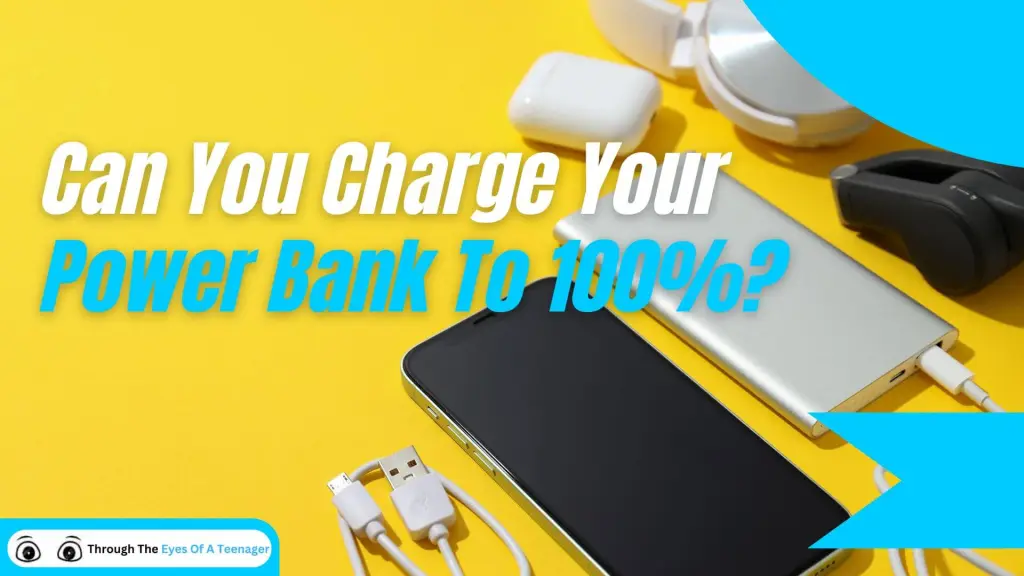You’ve probably heard a lot about HDMI 2.1 recently, especially with 4K and 8K gaming becoming more mainstream these days.
nnnnBut did you know that over 40% of HDMI 2.1 cables sold online are counterfeit or mislabeled? It’s crazy, right? The tech world can be tricky, and cables are often overlooked, but a real HDMI 2.1 cable is essential for getting the most out of your devices.
nnnnTrust me, I’ve been there—sorting through cables and trying to figure out which ones will actually work for my gaming setup (it’s a pain).
nnnnSo, in this guide, I’ll walk you through exactly how to test if your HDMI cable is truly HDMI 2.1 and avoid getting tricked by fake ones.
nnnnQuick Summary:
nnnn- n
- To check if your HDMI cable is HDMI 2.1, look for the “Ultra High Speed HDMI” logo and check overall build quality. nnnn
- Use your TV or console settings to confirm 4K at 120Hz or 8K at 60Hz support. Also test Variable Refresh Rate (VRR) and Auto Low Latency Mode (ALLM) on compatible gaming consoles. nnnn
- Be cautious of cables lacking certification or that seem cheaply made, as they may not meet HDMI 2.1 standards. n
Helpfull article:
nnnn
Top HDMI 2.1 Cables: Features, Benefits, and FAQs for the Best Performance
nnnnThe top 3 best HDMI 2.1 cables – Highwings, Monoprice, and PowerBear – offer different features and prices for high-quality… Read more
Best latest article:
nnnnnTable of Contents:
n nUnderstanding HDMI 2.1 Specifications
nnnnHDMI 2.1 is a standard with 48Gbps bandwidth that allows 4K at 120Hz and 8K at 60Hz, perfect for gaming and high-definition movies.
nnnn
This bandwidth allows HDMI 2.1 to handle 4K gaming at 120Hz and 8K at 60Hz—something HDMI 2.0 could never manage. If you’re into gaming or love watching ultra-high-definition movies, this is a must-have feature.
nnnnThe HDMI 2.1 standard also includes support for technologies like Variable Refresh Rate (VRR), Auto Low Latency Mode (ALLM), and Quick Frame Transport (QFT). All of which can enhance your gaming experience by reducing input lag and improving frame rates.
nnnnThese features may sound a bit techy, but if you’re playing games or watching the latest movies, they’ll make a huge difference in quality.
nnnnOne thing to note: not every HDMI 2.1 cable will have the exact same features. Some may support 4K at 120Hz but not 8K. So, be sure to check your cable’s specs to see what it’s capable of!
nPhysical Identification Methods
nnnnTo check if your HDMI cable is HDMI 2.1, look for the “Ultra High Speed HDMI” certification label and official hologram on the cable or packaging.
nnnn
Genuine HDMI 2.1 cables come with labels showing their certification—specifically the “Ultra High Speed HDMI” certification logo. This is crucial. A cable without this label might not meet the required specifications, even if it claims to be HDMI 2.1.
nnnnLook closely at the cable or its packaging for the official HDMI hologram. If it’s missing or doesn’t match the official design, that’s a big red flag.
nnnnYou should also see a QR code on the packaging that can be scanned to verify the cable’s authenticity. This might not work with every cable, but it’s worth giving a shot as it does prove 100% authenticity.
nnnnIf you’re buying online, always double-check the product description and look for that official certification. Some sellers may try to pass off HDMI 2.0 cables as 2.1, and that can lead to a lot of confusion and disappointment. It’s also always smart to make sure your buying from good brands such as: Belkin or Monoprice.
nTesting Your HDMI 2.1 Cable’s Performance
nnnnNow let’s get into the fun part—testing your HDMI cable. After all, labels and holograms are great, but we need to make sure your cable can handle the specs it promises. Here’s 3 methods how you can easily test it:
nnnnnnnn1. Built-in TV/Monitor Diagnostic Tools
nnnnMost modern TVs and monitors have built-in diagnostic tools that show you information about the current display settings. This includes the resolution and refresh rate.
nnnnYou can even check this on windows by going into: Display setting>Display resolution. Once there you can verify if your HDMI cable’s resolution is the same as on the box.
nnnn
This is always a good and reliable way to test your HDMI cables capabilities.
nnnnnnnn2. Testing Bandwidth and Resolution
nnnnTesting your bandwidth and resolution can be a bit daunting, but it does have a few benefits such as:
nnnn- n
- Ensures top video quality by confirming cable capabilities. nnnn
- Prevents compatibility issues with HDMI 2.1. nnnn
- Saves money by avoiding unnecessary upgrades. n
Many TV brands offer apps or settings where you can test the bandwidth of the incoming signal. Using these tools, you can confirm whether your HDMI cable supports 48Gbps. If it doesn’t, it’s probably not HDMI 2.1.
nnnnnnnn3. Verifying VRR Support
nnnnFor gamers, VRR (Variable Refresh Rate) support is key. This feature helps reduce screen tearing and stuttering. It does this by syncing the refresh rate of your monitor with your graphics card’s frame rate.
nnnn
To test VRR support, first connect your cable to a gaming console like the Xbox Series X or PlayStation 5. Then look for VRR settings in the console’s video output menu. If the option is available and your screen supports it, your cable is likely HDMI 2.1.
nCommon Red Flags of Fake HDMI 2.1 Cables
nnnnLet’s face it—nobody wants to get done by a counterfeit cable. So, how do you spot the fakes? Here are a few things you should look out for when buying a HDMI 2.1 cable:
nnnn- n
- Price: If the price seems too good to be true, it probably is. HDMI 2.1 cables are more expensive than older versions because of their higher bandwidth. A super cheap HDMI cable is likely not HDMI 2.1. nnnn
- Missing Certifications: If your cable doesn’t have the proper “Ultra High Speed HDMI” logo or lacks the hologram, then that can be a big red flag. nnnn
- Claims that don’t add up: Some cables will boast about 8K or 4K at high refresh rates but may only support lower resolutions. If the marketing sounds too good to be true, dig deeper before buying. nnnn
- Build Quality: Counterfeit cables often have poor build quality. Look for flimsy connectors or subpar materials. A genuine HDMI 2.1 cable is built to last. n
Of course I would always recommend that you check out a review of the cable that you want to buy. However, if that’s just not possible because there aren’t any reviews of it online, then these tips can save you from a scam.
nnnnTo make it as easy a possible, here are a few cables that I would recommend. I picked these cables specifically because of their great quality and affordability. You can check it my full review for each cable here.
nnnn nnn n n
nnn n n nnn n n
nnn n n nnn n n
nnn n nTools and Apps for HDMI Verification
nnnnIf you’re still unsure about your HDMI 2.1 cable, there are a few tools and apps that can help you confirm its authenticity:
nnnnnnnn1. Official HDMI Certification Verification App
nnnn
The HDMI Licensing Administrator actually offers an official app that allows you to verify the HDMI 2.1 certification of your cable. Just scan the QR code on the packaging and check the details. This app is available for both Android and iOS, and it’s a really simple way to confirm that your cable meets the proper standards.
nnnnOfcourse, nothing is 100% reliable. However, this app is the best method out there an I’d say it gets it right around 98% of the time. You can download it for free here.
nnnnnnnn2. Display Info Menu Testing
nnnn
On many TVs and monitors, you can check the information about the signal coming in by using the display info menu. This menu will show you the resolution, refresh rate, and other important specs. If your cable supports HDMI 2.1, it should show the appropriate resolution and refresh rate.
nnnnAs shown in the image above, this also works on Windows. All you have to do is go to: Display setting>Display resolution and then see if it shows the appropiate resolution.
nnnnnnnn3. Gaming Console Video Output Settings
nnnn
Both the PlayStation 5 and Xbox Series X have settings that let you check and adjust video output. So, If your HDMI cable supports 4K at 120Hz or 8K at 60Hz. Then that should appear in the video output settings on these consoles.
nnnnIt might also not be able to reach the advertised resolution if your TV/monitor isn’t cappable. So I would suggest to first check your monitor’s Hz and then check in the settings if it’s the same.
nnnnnnnn4. Professional Testing Equipment
nnnn
For the hardcore tech enthusiasts, there’s always professional testing equipment available. This equipment can measure the actual bandwidth and performance of your HDMI cable.
nnnnThese tools aren’t cheap, but they’re the most accurate way to test HDMI cables for compliance with HDMI 2.1 standards. I wouldn’t necessarily recommend it to everyone, but if you have the equipment lying around then it’s worth a shot.
nHow To Check If HDMI Cable Is 2.1 – Conclusion
nnnnAnd there you have it! Now you’re fully equipped to test your HDMI 2.1 cables and avoid the fakes. Whether you’re gaming, watching movies, or streaming, you need a cable that can keep up with the high demands of modern tech. Remember, always check for official certification labels, use diagnostic tools to test performance, and don’t fall for deals that sound too good to be true.
nnnnIf you have any doubts or questions about your HDMI cable, feel free to leave a comment below! I’ll help you figure it out. Your gaming and entertainment experience deserves the best, and that starts with the right cable.
nFAQ’s
nnnnYes! HDMI 2.1 cables are backward compatible with older HDMI versions. However, if your device doesn’t support HDMI 2.1 features, like 4K at 120Hz or 8K, the cable will still work but won’t provide those benefits.
nThe key difference is the bandwidth: HDMI 2.1 supports 48Gbps, allowing for 4K at 120Hz and 8K at 60Hz. HDMI 2.0 supports 18Gbps, which is limited to 4K at 60Hz. HDMI 2.1 also adds support for features like Variable Refresh Rate (VRR) and Auto Low Latency Mode (ALLM).
nIf you want to play 4K games at 120Hz or take advantage of features like VRR and ALLM, an HDMI 2.1 cable is necessary. However, for regular 4K at 60Hz gaming, HDMI 2.0 may suffice.
n










Redragon YAMA K550 Review: Feature-Packed & Affordable
Looking for a premium full-size keyboard under $100? The Redragon YAMA K550 delivers RGB, macros, and serious value.
How Charging Your Power Bank to 100% Can Damage It
Learn why you shouldn’t charge your power bank to 100% and tips on extending your power banks lifespan.
Power Bank Lifespan: How Many Charges Will You Get?
Learn how to make your power bank last 3-5 years with expert tips on usage, storage, and maintenance. Discover the secrets to longer battery life!
Portable Charger Technologies: A Complete Guide to Fast Charging in 2024
Discover the latest portable charger technologies, from USB-PD to GaN charging. Learn which fast-charging standard is best for your devices and how to choose the right power bank.
Can Portable Chargers Overheat? Understanding the Risks and Safety Measures in 2024
Discover the potential risks of portable charger overheating, learn why it happens, and get crucial safety tips to protect your devices and yourself in 2024.